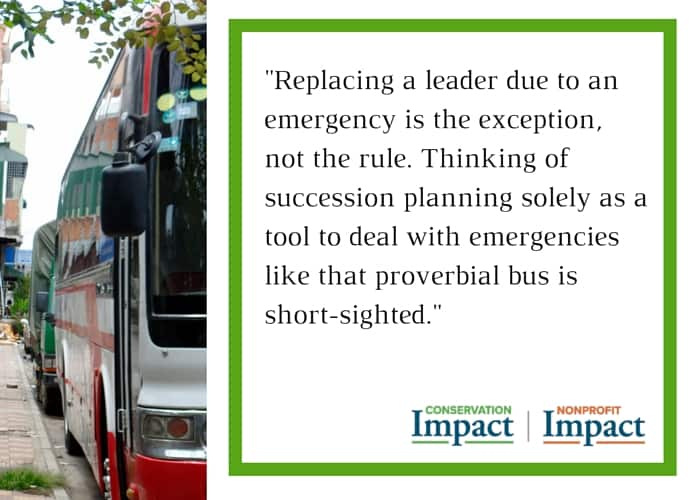
Succession Planning Part 2: What If No One Gets Hit by a Bus?
Yes, sometimes people do get hit by a bus. Or win the lottery, or have a baby and opt to stay at home, or decide to travel around the world—you get the idea. If your organization still doesn’t have an emergency succession plan in place to manage these eventualities, then that’s where you need to start.
However, as we outlined in our last post, there are three different types of succession plans: emergency, designated, and departure-defined. And since replacing a leader due to an emergency is the exception, not the rule, thinking of succession planning solely as a tool to deal with leadership emergencies like that proverbial bus is short-sighted.
So what’s the best way to plan for your organization’s next generation of leadership? The answer is not brainstorming ways you could find your current leader’s doppelganger. A more strategic approach is to consider what kind of leadership your organization will need in the future. An organizational analysis can clarify those future leadership needs and provide the context to inform a designated or departure-defined succession plan.
An organizational analysis is a systematic, objective process that examines an organization’s efficiency and efficacy toward achieving mission-related results. It focuses on internal operations and capacity (human, technological, financial, and operational) and processes like decision making, communication, and project and information management.
This kind of analysis helps you understand your organization’s strengths and weaknesses relative to your mission and the goals you plan to accomplish. Thus, it provides insight into the key leadership and management skills the organization needs in its next generation of leadership. These insights make drafting a job description and search parameters a breeze when preparing for a leadership transition. And when developing organizational leaders over time, the analysis helps to identify professional development priorities and performance goals.
Just because someone has been a wonderful leader for your organization doesn’t mean that your next leader should be exactly the same. Look at your organization objectively and let what you learn drive how you define and develop your next generation of leadership.

